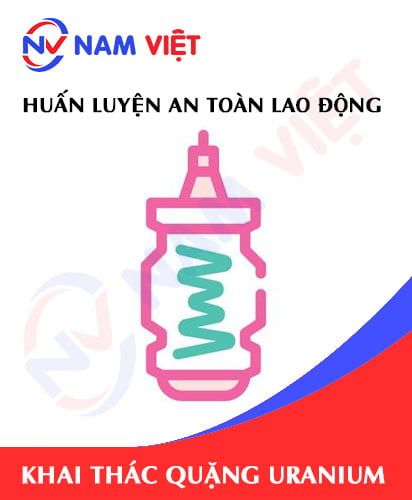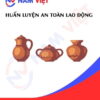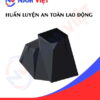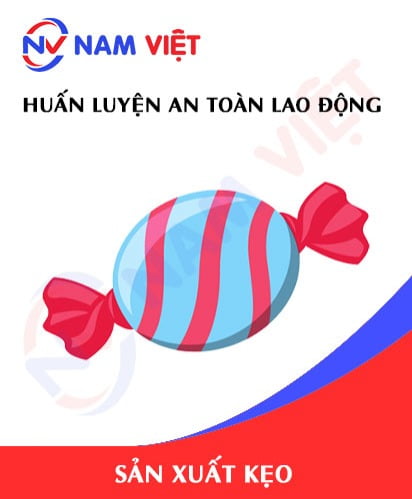Occupational Safety Training in Uranium Ore Mining
99,000 ₫
Note: The above price is calculated for one person and may fluctuate depending on the number of trainees participating in the course and market movements. For more accurate pricing support, please refer to the quotation table or contact our consulting staff directly.
Occupational safety is a critical issue in uranium ore mining and must be addressed promptly to ensure the health and safety of workers and enhance the reputation of businesses. The Occupational Safety Training course is an effective solution to raise awareness among workers on accident prevention during uranium ore mining.
Table of Contents
Toggle1. Overview of uranium ore
a. What is Uranium?
- Uranium is a chemical element in the periodic table with the chemical symbol U and atomic number 92. It is a transition metal in the actinide series and is the heaviest element found naturally on Earth. Uranium is mainly used to generate nuclear energy in nuclear power plants, as well as in medical and scientific applications. Uranium is also a radioactive substance and can be harmful to health if exposed to it too much or improperly.
- Vietnam has not yet discovered large uranium reserves; however, a small amount of uranium is found in the by-products after mining iron, minerals, and copper ores. Currently, according to the Government’s plan, Vietnam is building its first nuclear power plant in Ninh Thuan province, with the goal of developing electrical energy to meet the country’s economic and social development needs.

b. Types of machinery for uranium ore mining
The types of machinery involved in uranium ore mining include:
- Seismic drills: these are drills designed to create boreholes on the ground surface or in the mine, to access the layers of soil containing uranium ore.
- Seismic equipment: these are devices used to accurately locate the layers of soil containing uranium ore.
- Excavators: these are machines that dig earth and rock from rock faces or in tunnels, used to extract uranium ore from the excavation site.
- Grinders: these are machines that grind uranium ore into powder, for further ore processing.
- Ore processing equipment: these are devices used to separate uranium ore from other impurities and to convert the ore into a usable form.
- Packaging machines: these are machines used to package the converted and processed uranium ore into containers or bags for transportation to the next processing factory or for storage.

c. Status of the uranium ore mining industry in Vietnam
- Currently, I have no information about uranium ore mining businesses in Vietnam. However, according to sources in 2014, Vietnam had a plan to mine uranium ore at the Nui Phao mine, in Thai Nguyen province, with Vimico (Vietnam Minerals Consulting and Exploitation Company Limited) as the investor.
- The Nui Phao mine is identified to have a reserve of about 6,500 tons of uranium, which is a large-scale mine with significant mining potential. However, uranium ore mining needs to comply with safety and environmental protection regulations.
d. Specific jobs in a uranium ore mine
Group 1
- Executive director, deputy executive director of a uranium ore mining mine
Group 2
- Safety officer: managing safety in the factory, designing safety procedures, supervising and urging employees to comply with safe work procedures.
Group 3
- Pre-mining: This is the preparatory stage for mining, including mine development, geological analysis, design of the mining system, equipment layout, and personnel training.
- Mine exploitation: Jobs at this stage include digging tunnels and adits, mining and transporting ore, sorting and processing ore, mine cleaning, and equipment maintenance and repair.
- Ore processing: After the ore is transported to the processing factory, the jobs include ore classification, crushing and grinding, separating uranium from other minerals, waste treatment, wastewater treatment, and sanitation.
- Production process control: Includes management, operation, and monitoring of the manufacturing process, including remote control and on-site supervision.
- Equipment maintenance: Maintaining equipment, machinery, and infrastructure in the mine and processing factory to ensure efficient and safe operation.
- Ensuring safety and environmental protection: Ensuring safety for employees, protecting the environment, and complying with safety and environmental regulations and standards.
Group 4
- Office jobs, service, sales, marketing.
- Production management, quality management, human resource management, material management, financial accounting management.
- Research and development: Researching and developing new mining methods, more advanced equipment, and environmental protection solutions to improve efficiency and minimize negative impacts on the environment.

2. Overview of uranium ore mining occupational safety training course
Within the scope of this article, we focus on issues related to Group 3, because Group 3 is the group that directly participates in the manufacturing process, bearing the highest risk of occupational safety. Refer to other groups here
a. What is Group 3 occupational safety training?
- Occupational safety training for Group 3 are sessions that equip employees with awareness of how to prevent workplace accidents.
- The occupational safety training course will help employees identify and avoid dangers, limiting the risks of workplace accidents during work.
REGISTER FOR OCCUPATIONAL SAFETY TRAINING SERVICE
b. Training time
Initial safety training time
- Total training time is at least 24 hours, including inspection time.
- 8 hours of theoretical study on the system of policies and laws on occupational safety and health
- 8 hours of theoretical study on basic knowledge of occupational safety and health
- 4 hours of theoretical study on specialized training content
- 2 hours of practical study on specialized training content
- 2 hours of theoretical examination at the end of the training course
The safety training center will allocate the time into multiple training sessions depending on the arrangement of study time for employees. However, there will usually be 6 training sessions, the course will take place over 3 days, provided that the manufacturing company can arrange continuous study time.
Periodic safety training time
- Before the **occupational safety card** expires, if an employee wants to get a new one, they must undergo a periodic **occupational safety training** course, with the **periodic safety training time** being at least 50% of the **initial safety training time.**
Explanation: the total periodic occupational safety training time is at least 12 hours, including inspection time. After completing the periodic training course and passing the required test, the employee will be re-issued or have their occupational safety card extended.
c. Contents of the training course
| STT | TRAINING CONTENT | TRAINING TIME (HOURS) | |||
| Total | Of which | ||||
| Theory | Practice | Test | |||
| I | System of policies and laws on occupational safety and health | 8 | 8 | 0 | 0 |
| 1 | Overview of the system of legal normative documents on occupational safety and health. | 6 | 6 | ||
| 2 | System of occupational safety and health technical standards and regulations. | 1 | 1 | ||
| 3 | Specific regulations of state management agencies on occupational safety and health when newly building, expanding or renovating facilities to manufacture, use, store and inspect machinery, equipment, materials, and substances with strict requirements for occupational safety and health. | 1 | 1 | ||
| II | Basic knowledge of occupational safety and health | 8 | 8 | 0 | 0 |
| 1 | Basic knowledge of hazardous and harmful factors in the workplace. | 4 | 4 | ||
| 2 | Methods to improve working conditions. | 1 | 1 | ||
| 3 | Safety culture in manufacturing and business. | 1 | 1 | ||
| 4 | Rights and obligations of employers and employees; policies and regimes on occupational safety and health for employees; functions and duties of the occupational safety and health network. | 1 | 1 | ||
| 5 | Occupational safety and health regulations, signs, occupational safety and health signs and use of safety equipment, personal protective equipment; professional skills and first aid skills for occupational accidents, prevention of occupational diseases. | 1 | 1 | ||
| III | Specialized training content | 6 | 4 | 2 | 0 |
| Comprehensive knowledge of types of machinery, equipment, and substances that generate hazardous and harmful factors; analysis, assessment, and management of occupational safety and health risks, safe work procedures with machinery, equipment, and substances with strict requirements for occupational safety and health. | 6 | 4 | 2 | ||
| IV | Safety training test at the end of the course | 2 | 2 | 0 | 0 |
| Total | 24 | 22 | 2 | ||
See more training content of 6 groups
d. Occupational safety card
After completing the occupational safety training course and passing the test, the employee will be granted an occupational safety card (in practice often called the occupational safety certificate of Group 3).
The Group 3 safety card will clearly show information such as: full name, date of birth, specific job and working environment. It also includes the training time, red seal and signature confirming the completion of the training course.
According to the regulations on granting safety cards specified in Clause 2 of Article 24 of Decree 44/2016/ND-CP, there are 2 cases:
- In cases where the employer and the employee **have a labor contract**, the **employer** must **sign, seal and laminate** the safety card for the trained Group 3 employee after they have undergone the training course from the occupational safety training unit and passed the test.
- In cases where the employee is a freelancer, seasonal worker, or **does not have a labor contract**, the **training unit** must **sign, seal and laminate** the safety card for the employee after they have undergone the training course from the occupational safety training unit and passed the test.

3. Identifying dangers affecting employees when mining uranium ore
Uranium ore mining can pose many dangers to the health of employees. Some of the main dangers include:
- Uranium emits ionizing radiation, which is harmful to living cells, especially nerve cells. When exposed to ionizing radiation, employees can suffer from cancer, heart disease, and other health problems.
- The uranium ore mining process also causes environmental pollution, including radiation and the release of toxic chemicals. These toxic substances can cause water and soil pollution, affecting the health of the community in the area.
- Jobs in the uranium ore mining process often involve the use of large machinery and equipment. The handling and transportation of uranium ore can also be dangerous to employees.
- During the mining and processing of uranium ore, other toxic chemicals such as sulfuric acid, sodium carbonate, and potassium permanganate are also used, posing a risk of poisoning to employees if not used with proper procedures and protective equipment.
4. Common types of occupational accidents for employees when mining uranium ore
The common types of occupational accidents that occur when mining uranium ore include:
- Radiation contamination: This is the main threat to employees involved in uranium ore mining. Exposure to radiation can cause adverse health effects such as cancer, weakened immune systems, anemia, and reproductive problems.
- Fires and explosions: The use of equipment and machinery during uranium ore mining can cause fires and explosions, especially when toxic and flammable materials such as oil and gas are used in the manufacturing process.
- Workplace accidents: Jobs in a uranium ore mining factory require high concentration and attention from employees, especially in areas where machinery operates. Therefore, workplace accidents such as collisions and injuries from machinery are also a significant danger to employees.
- Use of toxic chemicals: The process of manufacturing uranium ore requires the use of toxic chemicals to isolate and process the ore. Contact with these chemicals can cause health problems such as headaches, dizziness, difficulty breathing, and skin problems.
5. Safety measures when participating in uranium ore mining
Uranium ore mining is an industry full of risks, so ensuring employee safety is extremely important. Below are some safety measures that must be complied with when participating in uranium ore mining:
- Wear full protective equipment: Including helmets, safety shoes, safety glasses, masks, gloves, anti-static jackets and chemical-resistant jackets.
- Use protective devices: Protective devices such as filters, pumps, fans, temperature control equipment, and other safety inspection devices must be used correctly to minimize risks.
- Comply with work procedures: Employees must comply with safe work procedures to minimize risks and ensure their own safety and that of their colleagues.
- Occupational safety training: Employees must be trained and instructed on safety skills and danger prevention measures to detect and handle dangerous situations quickly and accurately.
- Regular inspection and maintenance of equipment: Equipment and machinery used in uranium ore mining must be inspected and maintained periodically to ensure they operate effectively and safely for employees.
- Use safe chemicals: When using chemicals in the uranium ore mining process, employees must use safe chemicals and ensure fire and explosion prevention measures.
- Environmental monitoring: Employees need to ensure that uranium ore mining activities do not affect the surrounding environment, including not causing water and air pollution.
- Periodically organize work environment monitoring in the mine, collect and analyze factors harmful to employees, thereby adjusting to reduce the level of harm to prevent occupational diseases for them.

6. Benefits of occupational safety training for uranium ore mining
An Toan Nam Viet provides your business with great benefits after completing occupational safety training courses in accordance with the regulations in Decree 44/2016/ND – CP on Occupational Safety and Health, for companies, factories, and businesses.
- Employees can identify potential risks of occupational accidents, thereby taking preventive measures to avoid occupational accidents.
- Your business can establish risk prevention measures in the manufacturing, operation, and maintenance process.
- Minimize costs when there is a risk of occupational unsafety.
- The manufacturing process will not be interrupted, which will help increase labor productivity and product quality.
- Comply with occupational safety laws, avoiding legal risks.
- Create prestige and professionalism in all aspects, thereby enhancing your business’s brand.
Nam Viet’s training courses are a solution to prevent and combat external factors affecting each individual so that they can avoid dangers that can lead to injury or, more seriously, death.
REGISTER FOR OCCUPATIONAL SAFETY TRAINING SERVICE
7. Customer feedback after completing the uranium ore mining occupational safety training course
An Toan Nam Viet has many years of experience in the mission of accompanying many businesses in Vietnam in general and in the southern provinces in particular. And that responsibility is something extremely precious to Nam Viet, which is why Nam Viet’s Occupational Safety Training is always focused on becoming more and more professional. And the motivation for An Toan Nam Viet to develop strongly to this day comes from the positive feedback and suggestions from businesses. Below is the feedback from our partners that we have served.
Bac Nam E&C Investment Construction Joint Stock Company
“The first time I used the service at An Toan Nam Viet, I was very surprised by the enthusiastic 24/7 support of the consulting team. The class organization was very fast and convenient for our company, thank you very much for Nam Viet’s service!”
Hoa Dat Construction and Trading Joint Stock Company
“Nam Viet’s service has helped us a lot in simplifying occupational safety and completing safety records for the working process. The consulting team is enthusiastic and timely in answering our questions. 5 stars for Nam Viet”
See more customer interviews after using the service of An Toan Nam Viet
8. Occupational Safety Training Capability of An Toan Nam Viet
An Toan Nam Viet is a reputable and quality occupational safety training center in Vietnam today. With occupational safety training sessions continuously taking place at manufacturing plants, factories or construction sites across the country (63 provinces and cities in Vietnam).
REGISTER FOR OCCUPATIONAL SAFETY TRAINING SERVICE
Occupational safety training license
- An Toan Nam Viet has been inspected by the **Occupational Safety Department of the Ministry of Labor – Invalids and Social Affairs** and granted a certificate of eligibility to operate occupational safety and health training. This further strengthens our **occupational safety training** capacity.

Documents and lectures
- Before the occupational safety training materials are included in the occupational safety training courses, they have been reviewed and censored to ensure that the lectures are always accurate in terms of knowledge and effective when applied.
- The teaching method of the lecturers is synchronized according to the teaching standards of An Toan Nam Viet, which is a method that experts in occupational safety and health training have researched and summarized during the teaching process to bring the highest knowledge absorption efficiency to students.
Facilities
- Controlling factors in the classroom that affect the training process will increase teaching performance and the effectiveness of knowledge absorption for students.
- The facilities supporting our training courses always arrange spacious classrooms that meet standards for area, lighting, training equipment, etc.
9. Reputable and quality safety training center nationwide
At An Toan Nam Viet, we always prioritize the professional dedication of occupational safety training. For us, imparting knowledge on how to protect oneself to workers so that they have a safe journey in their livelihood is a contribution to building the country.
To ensure effective training, we prepare carefully and meticulously for every detail, no matter how small. From preparing tools, equipment, and teaching devices to textbooks, documents, sound, and lighting.
Our occupational safety training lecturers are experts with many years of experience in the field. They even have research projects identifying risks in all occupations and how to prevent them.
The lecturers’ lessons are summarized from reality and conveyed in a vivid and easy-to-imagine way to employees. These factors help employees feel comfortable during their study time and absorb our teaching knowledge well. Of course, the knowledge conveyed always closely follows **Decree 44/2016/ND-CP**.
From there, they grasp many measures to prevent dangers and how to protect themselves. At the same time, they also apply it in the most suitable way in their actual work.
Our safety training center is proud to be a reputable and professional provider of occupational safety training services with the following advantages:
- Competitive training costs but guaranteed training quality.
- Flexible training schedule with the production situation of the business.
- Fast and legally compliant procedures for issuing occupational safety training certificates.
- Training lecturers are people with many years of experience in the profession.
- Classrooms are controlled for factors affecting the training process, increasing teaching performance and the effectiveness of knowledge absorption for students.
- The lectures are compiled to be suitable for occupational safety work in businesses.
- An Toan Nam Viet works with dedication and professionalism to support customers accurately and as quickly as possible.

10. Refer to more occupational safety training documents for uranium ore mining
- Uranium ore mining occupational safety documents
- Occupational safety training document set
- Occupational safety training test question set
- Uranium ore mining occupational safety multiple-choice test
- Slide lecture on occupational safety training for uranium ore mining
1 review for Occupational Safety Training in Uranium Ore Mining
No comments yet















caotiensyhung.07081999
Tốt lắm nhé!